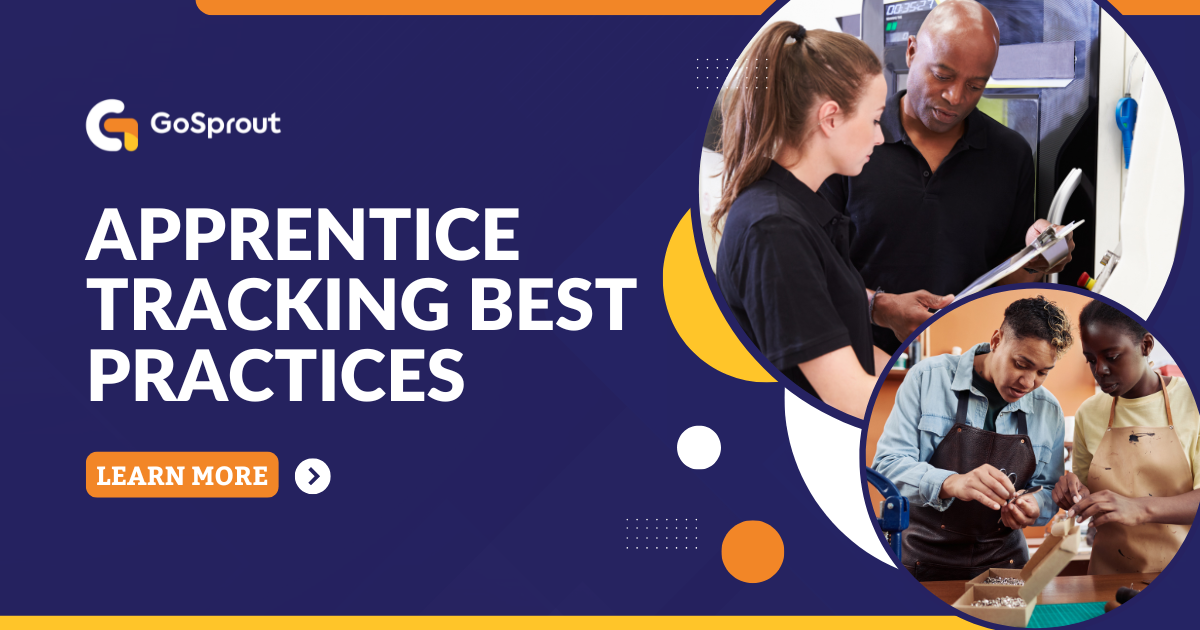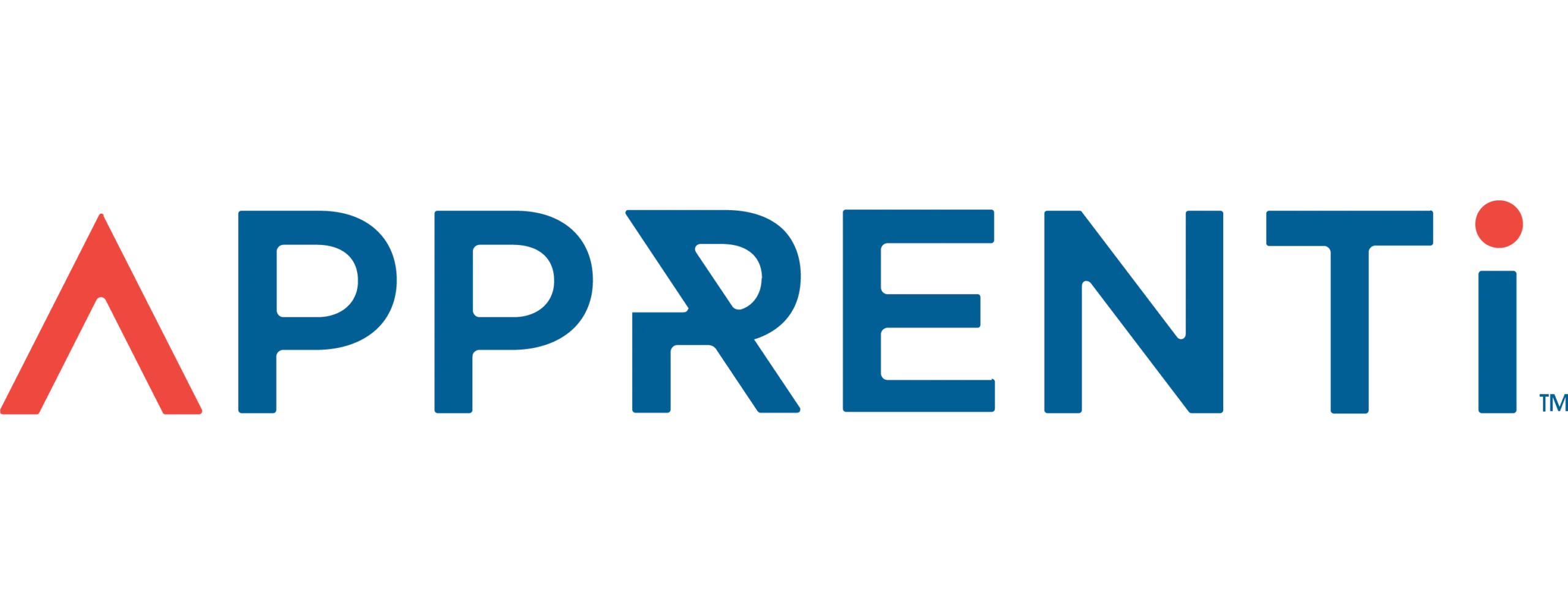Article Summary
- Elevate your apprentice tracking by centralizing compliance, automating progress monitoring, and enhancing data management.
- Select and implement the right digital tools for streamlined documentation and robust reporting in your apprenticeship programs.
- Establish clear milestones and success metrics to effectively measure skill development, competency achievements, and overall program impact.
- Foster stronger stakeholder communication and optimize training coordination to build resilient talent pipelines and support apprentice career advancement.
Want to Learn More About Your Registered Apprenticeship Opportunities?
BOOK A FREE CONSULTATION
Why Do Apprentice Tracking Systems Matter Today?
If you’re juggling multiple apprenticeship tracks using a patchwork of spreadsheets, emails, and maybe even paper files (we’ve all been there!), you know how quickly things can get overwhelming. In today’s fast-paced environment, having a robust apprentice tracking system isn’t just a nice-to-have; it’s essential for sanity and success. Without it, vital information falls through the cracks, deadlines get missed, and it becomes nearly impossible to scale your programs effectively.
We’re talking about creating pathways for our youth, helping them gain skills without drowning in debt, and simultaneously helping employers like you build the loyal, skilled workforce you need. Apprentice tracking empowers you to bring structure, clarity, and momentum to every stage of the apprenticeship journey. It’s about closing that skills gap—intentionally, collaboratively, and with the future in mind.

Streamline program compliance tracking
Let’s be honest, compliance can be a beast. Department of Labor requirements, state-specific regulations, internal policies – it’s a lot to keep on top of. A dedicated apprentice tracking system helps you manage all these moving parts. Think of it as your digital compliance officer, ensuring all necessary documentation is in place, deadlines are met, and audit trails are clear. This is crucial because Registered Apprenticeship Programs (RAPs) must meet federal requirements designed to assure quality and safety. Automating compliance tracking frees up your HR team to focus on strategic initiatives rather than administrative headaches.
Automate progress monitoring
How do you currently track an apprentice’s journey from day one to graduation? If it’s manual, you’re likely spending countless hours chasing updates and compiling reports. Modern apprentice tracking systems automate this. You can see at a glance how each apprentice is progressing against their on-the-job training (OJT) hours and related technical instruction (RTI). This real-time visibility is invaluable for both mentors and apprentices, ensuring everyone stays on track and identifying potential issues early. It’s about making sure every apprentice gets the support they need to succeed.
Enhance data management efficiency
Data is king, right? But only if you can actually use it. Scattered data across different systems (or worse, different people’s hard drives) makes it nearly impossible to get a clear picture of your program’s performance. A centralized apprentice tracking system brings all your apprentice data into one secure, accessible place. This means easier reporting, better insights, and more informed decision-making. Effective data management is the backbone of any successful, scalable apprenticeship program.
Build stronger talent pipelines
Apprenticeships are a fantastic way to cultivate talent from the ground up, molding individuals into your ideal future employees. An efficient tracking system helps you manage this pipeline effectively. You can identify high-potential apprentices, track their skill development, and ensure they’re getting the experiences they need to grow. This not only benefits the apprentices by providing clear career pathways but also ensures your organization has a steady stream of skilled, motivated individuals ready to step into key roles. For employers, a successful RAP can provide a steady pipeline of skilled talent and decrease turnover.
Pro tip: Regularly review your apprentice tracking data to identify trends in program completion and skill gaps. This allows you to proactively adjust your training and support, ensuring your programs remain effective and responsive to both apprentice and business needs.
Let’s Talk About Modern Tracking Tools
Alright, so we agree that managing apprenticeship programs with outdated methods is like trying to stream a 4K movie on dial-up—frustrating and inefficient. As an HR executive overseeing multiple apprenticeship tracks, you’re likely feeling the pain of disconnected systems, delayed updates, and constant miscommunication. The good news is that modern apprentice tracking tools are purpose-built to simplify this complexity, bringing everyone—employers, sponsors, schools, journeyworkers, and apprentices—onto the same page.
These platforms don’t just digitize the process; they create transparency, accountability, and real-time collaboration. It’s about leveraging technology to make workforce development a true team game—one where every stakeholder is informed, aligned, and empowered to contribute to success.

Select the right platform
Choosing the right platform is like picking the right tool for a critical job; it makes all the difference. You’re not just looking for a database; you need a dynamic system that supports the entire apprenticeship lifecycle. Consider these factors:
- Scalability: Can the platform grow with your programs and organization?
- Ease of Use: Is it intuitive for all users, from HR admins to apprentices in the field?
- Integration Capabilities: Can it connect with your existing HRIS, LMS, or payroll systems?
- Compliance Features: Does it specifically address Department of Labor (DOL) and other regulatory requirements?
- Reporting & Analytics: Does it provide the insights you need to measure success and make improvements? The ideal platform should feel like a partner, simplifying your administrative burden, not adding to it.
Implement digital documentation
Moving away from paper and disparate digital files to a unified digital documentation system is a game-changer. Imagine all apprentice agreements, OJT logs, RTI transcripts, performance reviews, and completion certificates stored securely and accessibly in one place. This not only streamlines audits but also provides a transparent record of each apprentice’s journey. It’s about creating a single source of truth that everyone can rely on. This is especially important as programs evolve and new partners are added, which can strain existing processes if not managed well.
Master reporting features
Data is only powerful if you can understand and act on it. Modern apprentice tracking tools offer robust reporting features that can transform raw data into actionable insights. You should be able to easily generate reports on:
- Enrollment numbers and demographics
- Progress towards OJT and RTI completion
- Skill attainment and competency levels
- Program completion rates
- Compliance status Leveraging these reporting features allows you to demonstrate program ROI, identify areas for improvement, and tell a compelling story about the value of your apprenticeships. Many states are working to expand RAPs and simplify processes, and good data helps make that case.
Pro tip: When evaluating platforms, involve key stakeholders from different user groups (HR, managers, journeyworkers, and even a current apprentice if possible). Their diverse perspectives will help you choose a tool that truly meets everyone’s needs.
Here’s How to Track Apprentice Progress
Once you have the right tools in place, the next step is to effectively track apprentice progress. This isn’t just about ticking boxes; it’s about ensuring each apprentice is developing the necessary skills and knowledge to succeed in their role and beyond. For HR executives managing diverse apprenticeship tracks, a systematic approach to progress tracking is key to maintaining quality and consistency. It’s about nurturing talent and ensuring that the promise of why apprenticeships are such a valuable pathway is fulfilled for both the individual and the company.
Set clear milestones
Think of milestones as signposts on the apprentice’s journey. They break down the overall program into manageable stages, providing clear goals and a sense of accomplishment along the way. Milestones should be:
- Specific: Clearly define what needs to be achieved.
- Measurable: Quantify the OJT hours, RTI credits, or competencies required.
- Achievable: Realistic within the given timeframe.
- Relevant: Aligned with the job role and overall program objectives.
- Time-bound: Associated with specific deadlines or phases of the apprenticeship. Clearly defined milestones make it easier for everyone involved – apprentices, mentors, and HR – to understand expectations and monitor progress. This clarity is fundamental to successful program administration.

Document skill development
Tracking progress isn’t just about hours logged; it’s critically about skills gained. Your apprentice tracking system should allow for detailed documentation of skill development. This might involve:
- Regular assessments by journeyworkers or supervisors.
- Portfolio submissions from apprentices.
- Competency-based evaluations. Documenting skill development provides tangible evidence of an apprentice’s growth and helps identify areas where additional support or training might be needed. This is where a dedicated solution like an Apprenticeship Management Platform truly shines, by providing a centralized hub for employers, sponsors, and training providers to collaborate on tracking both on-the-job and related training, simplifying compliance immensely.
Monitor training hours
Both On-the-Job Training (OJT) and Related Technical Instruction (RTI) hours are critical components of a Registered Apprenticeship Program. Accurately monitoring these hours is essential for compliance and for ensuring apprentices receive a well-rounded training experience. A sound tracking system will automate much of this, allowing apprentices and supervisors to easily log hours and HR to generate reports effortlessly. This helps avoid last-minute scrambles to verify hours before graduation.
Verify competency achievements
Ultimately, the goal of an apprenticeship is for the apprentice to become competent in their chosen occupation. Verification of these competencies is a crucial step. This often involves a final assessment, a practical demonstration of skills, or a review by a committee. Your apprentice tracking system should facilitate the documentation of these competency achievements, leading to the awarding of a nationally recognized credential. This credential is a testament to the apprentice’s hard work and the quality of your program, something that employers increasingly value.
Pro tip: Implement regular check-ins between apprentices and their mentors/supervisors to discuss progress against milestones and skill development. These conversations, documented in your tracking system, are invaluable for providing timely feedback and support.
Let’s Define Success Metrics That Matter
Okay, so you’re tracking progress—but how do you know if your apprenticeship programs are truly hitting the mark? It’s about looking beyond just the numbers on a spreadsheet. For an HR executive, defining and measuring the right success metrics is crucial for demonstrating the value of your programs, securing ongoing support, and making data-driven improvements. It’s not just about proving the program works; it’s about continuously learning from the data to improve it.
It’s about showing how apprenticeships contribute to the bigger picture—building a skilled workforce, driving retention, and fostering long-term economic opportunity. Measuring success also enables you to align your programs more closely with company goals, workforce demands, and learner outcomes. Sometimes, understanding the nuances between different work-based learning models, like apprenticeships vs. internships, can also help refine what success looks like for each specific program and audience.

Measure completion rates
Completion rates are a fundamental metric. A high completion rate generally indicates a well-structured program with good support systems, while a low rate might signal issues that need addressing. But don’t just look at the overall number. Dig deeper:
- Are there differences in completion rates across different apprenticeship tracks?
- Are certain demographics facing more challenges?
- What are the common reasons for non-completion? Understanding these nuances can help you refine your recruitment, support, and training strategies. Consistently high completion rates are a strong indicator of a healthy and effective apprenticeship ecosystem.
Track skill acquisition
While completion is important, the ultimate goal is for apprentices to acquire the necessary skills and competencies for their roles. Tracking skill acquisition involves more than just checking off a list. It means assessing the quality of skills learned and the apprentice’s ability to apply them in real-world situations. This can be measured through:
- Performance reviews and supervisor feedback.
- Practical assessments and demonstrations.
- Competency evaluations against industry standards. Focusing on tangible skill acquisition ensures your apprentices are truly job-ready upon completion. If you’re unsure how to structure this or even where to begin with setting up a registered apprenticeship, services like Workforce Planning & Consulting can be invaluable, helping you understand the landscape, including potential grants and tax incentives.
Evaluate program impact
Beyond individual apprentice success, what’s the broader impact of your programs on the business? This is where you connect apprenticeship outcomes to key organizational goals. Consider metrics like:
- Return on Investment (ROI): Studies have shown significant ROI for employers; for instance, one study found a 44 percent return on investment for employers for every dollar invested in an apprentice.
- Retention Rates: How many apprentices stay with the company post-graduation, and for how long?
- Time to Full Productivity: How quickly do apprentice graduates reach full productivity compared to other hires?
- Impact on Diversity and Inclusion Goals: Are your programs helping to create a more diverse workforce?
- Innovation and Productivity: Do apprentices bring fresh perspectives that lead to process improvements or innovation? Evaluating this broader impact helps demonstrate the strategic value of apprenticeships to senior leadership.
Pro tip: Establish baseline metrics before launching new apprenticeship tracks or making significant program changes. This will allow you to accurately measure the impact of your initiatives over time.
Here’s How to Strengthen Your Program
Running successful apprenticeship programs is an ongoing journey, not a destination. As an HR executive, you’re always looking for ways to enhance their effectiveness and ensure they meet the evolving needs of both your apprentices and the business. Continuous improvement is key, and a good apprentice tracking system provides the data and insights you need to make informed decisions. It’s about creating a dynamic learning environment that fosters growth and excellence, whether you’re a large enterprise or exploring apprenticeships for SMBs.
Improve stakeholder communication
Effective communication among all stakeholders – apprentices, mentors, supervisors, RTI providers, and HR – is vital. Misunderstandings or lack of information can lead to frustration and disengagement. Your apprentice tracking system can serve as a central communication hub. Look for features that facilitate:
- Secure messaging between parties.
- Automated notifications for important updates or deadlines.
- Shared access to progress reports and documentation (with appropriate permissions, of course). Streamlined communication ensures everyone is informed, aligned, and working towards the same goals. For apprentices, having all their tasks, feedback, and progress readily available in their pocket via an Apprentice App can significantly boost their engagement and understanding of their own development path.
Optimize training coordination
Coordinating On-the-Job Training (OJT) with Related Technical Instruction (RTI) can be complex, especially when dealing with multiple apprentices, tracks, and training providers. An efficient tracking system helps you manage this coordination seamlessly. You can:
- Align OJT schedules with RTI coursework.
- Track completion of both training components.
- Ensure that skills learned in RTI are reinforced on the job, and vice-versa. This holistic approach to training ensures apprentices receive a comprehensive and integrated learning experience. The challenge of providing RTI that leverages existing education programs while meeting employer needs is a common one.
Support career advancement
Apprenticeships are not just about filling entry-level positions; they are about launching careers. A strong program provides clear pathways for advancement. Your tracking system can support this by:
- Documenting skills and competencies that are transferable to higher-level roles.
- Identifying apprentices with leadership potential.
- Helping to map out future career development plans based on acquired skills. When apprentices see a clear future with your company, their motivation and loyalty increase significantly.
Ensure compliance standards
We’ve touched on compliance before, but it bears repeating because it’s so critical. Ensuring ongoing adherence to Department of Labor regulations and other relevant standards is non-negotiable. A robust apprentice tracking system should provide features for:
- Maintaining up-to-date program registration documents.
- Tracking Equal Employment Opportunity (EEO) data for apprentices.
- Generating compliance reports for audits.
- Documenting adherence to wage progression schedules. Staying on top of compliance protects your organization and ensures the integrity of your programs.
Pro tip: Regularly solicit feedback from all stakeholders – apprentices, mentors, and RTI providers – about the program and the tracking system itself. This feedback is invaluable for identifying areas for improvement and fostering a culture of continuous enhancement.
Conclusion: Transform Your Apprentice Tracking Approach
As an HR executive, you’re at the forefront of shaping your organization’s talent strategy. Transitioning from manual or disjointed apprentice tracking methods to a modern, integrated system isn’t just an operational upgrade—it’s a strategic move. It’s about unlocking the full potential of your apprenticeship programs to develop a skilled, engaged, and future-ready workforce. By reducing administrative burdens, you free up time to focus on what truly matters: nurturing talent and driving business success.
Imagine having all apprentice data—from enrollment to certification—centralized, accessible, and up to date. This not only simplifies compliance and increases efficiency but also provides powerful insights into program performance. With the right system in place, continuous improvement becomes part of your culture, supported by real-time, data-driven decisions. Embracing a sophisticated apprentice tracking approach is an investment in the long-term strength of your workforce—and the future of your organization.

Moreover, a streamlined system enhances the experience for everyone involved. Apprentices benefit from clear expectations, transparent progress tracking, and timely support. Mentors and supervisors can more effectively guide and evaluate their apprentices. And your HR team can operate with greater efficiency and strategic focus. For organizations looking to further enhance their programs, exploring options like custom Course Development can tailor learning experiences precisely to your needs, integrating seamlessly with a robust tracking framework. Ultimately, transforming your apprentice tracking is about creating an ecosystem where talent thrives, contributing to a more equitable and skilled workforce. You can stay connected with advancements and best practices in the field by following industry leaders on platforms like LinkedIn.
Pro tip: Don’t view the implementation of a new apprentice tracking system as a one-time project. Instead, treat it as an ongoing process of optimization, regularly reviewing its effectiveness and adapting it to meet the evolving needs of your programs and your organization.
Conclusion
Managing multiple apprenticeship tracks effectively requires moving beyond outdated internal systems. A dedicated apprentice tracking platform, like GoSprout, simplifies the complexity, ensuring compliance, enhancing data management, and empowering all stakeholders. By centralizing information and automating key processes, you can focus on developing talent and closing the skills gap within your organization and our communities.
GoSprout is designed to put everyone in the game, from employers and sponsors to schools and the apprentices themselves. We believe workforce development is a team effort, and our tools are built to foster that collaboration, making apprenticeship management a pleasure, not a burden. Let’s work together to build those critical pathways to success for our youth and strengthen our industries. We’re passionate about helping you launch and manage registered apprenticeships that create lasting value. Ready to see how GoSprout can transform your apprenticeship programs? Let’s connect and explore the possibilities.
Frequently Asked Questions
- Q: We already have an HRIS. Why do we need a separate apprentice tracking system?
- A: While your HRIS manages employee data, a dedicated apprentice tracking system is specifically designed for the unique complexities of apprenticeship programs, including OJT/RTI tracking, compliance with DOL standards, and multi-stakeholder collaboration. It complements your HRIS by providing specialized functionality.
- Q: How can an apprentice tracking system help with Department of Labor (DOL) compliance?
- A: These systems often include features to manage program registration documents, track work process schedules, monitor EEO data, and generate reports required for DOL audits, significantly simplifying compliance efforts.
- Q: What kind of reporting capabilities should I look for in an apprentice tracking tool?
- A: Look for customizable reports on apprentice progress, OJT/RTI hours, skill attainment, completion rates, demographic data, and compliance metrics. The ability to export data and visualize trends is also important.
- Q: How can these systems improve the experience for apprentices themselves?
- A: Apprentices benefit from clear visibility into their training plans, progress, and upcoming requirements. Many systems offer mobile access, allowing apprentices to easily log hours, view feedback, and communicate with mentors, making them feel more engaged and supported.
- Q: Can apprentice tracking software help manage programs across multiple sites or states?
- A: Yes, a key benefit of centralized apprentice tracking software is its ability to standardize program management and reporting across different locations, ensuring consistency and simplifying oversight for multi-site or multi-state operations.
- Q: What’s the typical implementation time for an apprentice tracking platform?
- A: Implementation times can vary based on the complexity of your programs and the specific platform. However, many modern SaaS platforms are designed for relatively quick setup, especially with vendor support for data migration and configuration.















